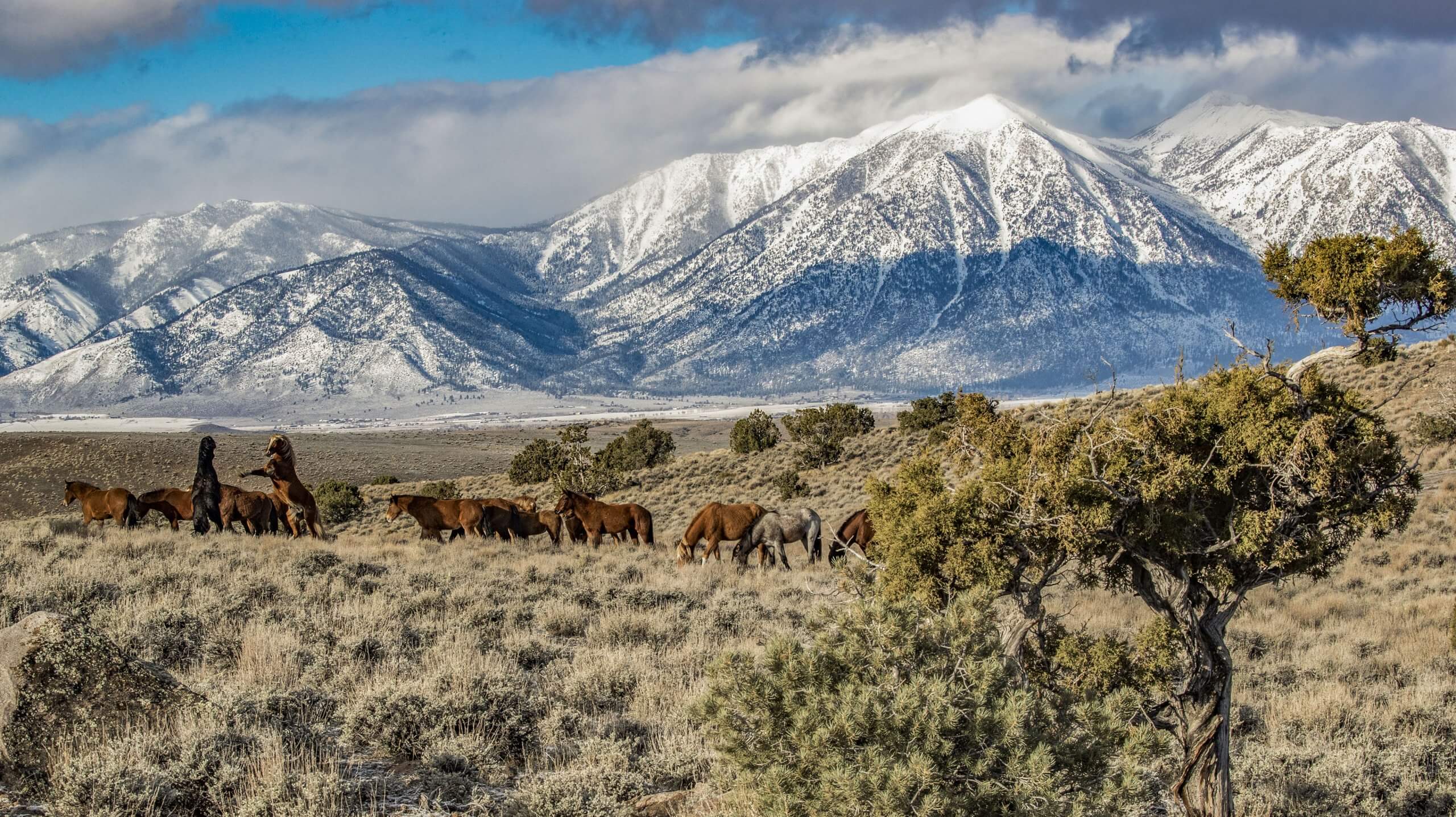
JT Humphrey
JT Humphrey
Silver State Safari: Where Nevada’s Wild Things Are
Grab the binocs, screw on the zoom lens, and set off on your own special Silver State safari.
Nevada boasts more pristine wild places and wide-open spaces than any other state in the Lower 48—all across terrain that stretches from sunkissed Mojave desertscapes to mountain-flanked, high-desert valleys to towering alpine paradises, and plenty in between.
When you realize that fun fact, it comes as no surprise that Nevada is home to some of the West’s widest diversity of animal species. And we aim to keep it that way with nine national wildlife refuges, 13 state wildlife management areas, and many other protected habitats that help keep the Silver State’s wildlife truly wild.
Discover the best places to spot migratory birds, desert bighorn sheep, wild horses and burros, the world’s rarest fish, and tons more intriguing animals—both out in the wild and at sanctuaries and animal parks offering easy-access glimpses of critters from around Nevada and far beyond.
Eagles and burros and elk, oh my! Come get face-to-face with Nevada’s most famous fauna
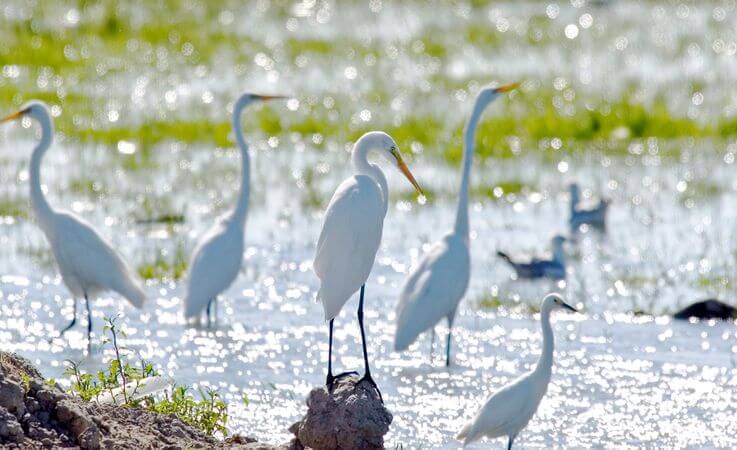
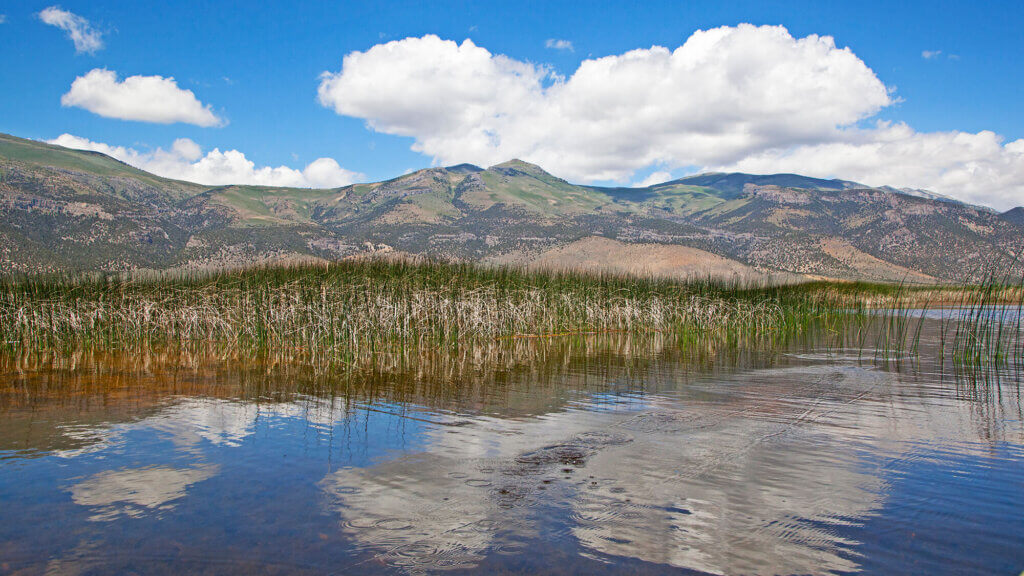
Birdwatching: Eagles, Waterfowl & More
Travel Nevada Pro Tip
OK, we’ll spill the beans: Nevada is a spectacularly underrated destination for serious bird nerds, thanks to tons of habitat for hundreds of native species and plenty of hangouts along the Pacific Flyway for thousands upon thousands of en-route-elsewhere avians, to boot.
Turns out, migratory birds and waterfowl love Nevada. Fallon’s Stillwater National National Wildlife Refuge hosts more than 250,000 avian visitors a year (in addition to its 400 other species of wild critters), while offering interpretive boardwalk trails, water trails for paddlers, and guided tours. Another stop along the Flyway is Pahranagat National Wildlife Refuge, a beautiful 5,000-acre oasis of wetlands located a few hundred miles south of Stillwater (as the crow flies) and just 90 highway miles north of Las Vegas.
And then there’s Ruby Lake National Wildlife Refuge, a 17,000-acre network of lakes, ponds, and labyrinthine marshlands on the south side of Elko’s Ruby Mountains, home to 220 species of birds—including trumpeter swans, greater sandhill cranes, and endangered sage grouse—which can be spotted from the shoreline or closer up from a canoe, kayak, or small-engine watercraft.
However, you don’t have to travel far from our metros for a sufficiently lofty birding experience. Just 20 minutes from the Las Vegas Strip you’ll find the 80-acre Henderson Bird Viewing Preserve’s nine-pond oasis, which draws 270 resident bird species, plus however many are making their way north or south on their migratory routes. Meanwhile, just 20 minutes from Downtown Las Vegas, the 1979-established Gilcrease Nature Sanctuary houses hundreds of exotic birds whose owners can no longer adequately care for them and offers kid-friendly tours and special events throughout the year.
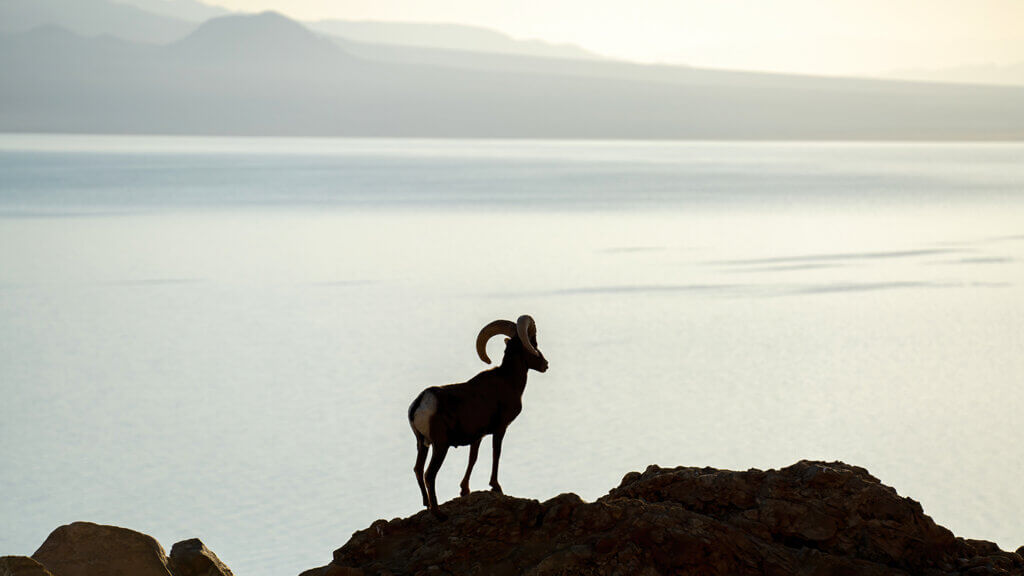
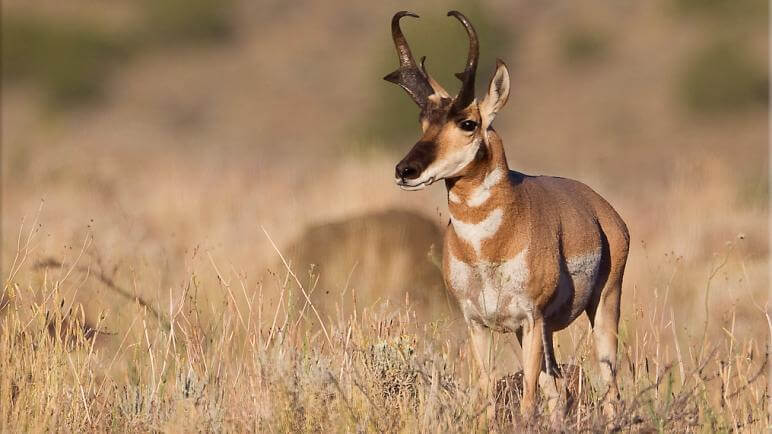
Awesome Ungulates: Desert Bighorn Sheep, Pronghorn Antelope, Elk & Even Moose
Desert Bighorn Sheep
Nevada is the desert bighorn sheep capital of the West. (Which is fitting, since it’s also our official state mammal.) This nimble, adaptable creature is one of few its size that can survive (let alone flourish) in the searing heat and bitter cold of the Mojave desert. They can go three days without water, lose up to 30% of their body weight, and bound up sheer cliff faces at 30 miles per hour—all while lugging around horns that can weigh a whopping 30 pounds.
However, as extreme as these hardy hoofers are, you don’t have to be to find ‘em. You’ll often see them grazing on the lawn at Boulder City’s Hemenway Park, as well as making their way to the shoreline of Walker Lake across US-95 (watch out for runners and be careful turning into viewing areas) and the via the aptly named Bighorn Crossing convenience store and snack bar in nearby Hawthorne.
For a wilder setting, viewing chances are high at Valley of Fire State Park. Or get into full-on backcountry mode in the Alta-Toquima Wilderness, where bighorn roam at altitudes exceeding 12,000 feet; or massive Desert National Wildlife Refuge, which was established specifically for bighorn preservation and, as a result, is now home to the largest population of them anywhere on Earth.
Pronghorn Antelope
The American pronghorn antelope is the second-fastest land animal in the world (second only to the cheetah) and the fastest land animal in North America, reaching up to 60 miles per hour at full speed. Although overhunting and habitat destruction reduced their numbers from millions to a mere 13,000, the 1931 designation of northwestern Nevada’s 573,000-ish-acre Sheldon National Wildlife Refuge (and sounder ecological policies) single-handedly brought them back from the brink. While sightings of the state’s 30,000-or-so of them are hardly rare in many parts of Nevada, 2,500 of them live at Sheldon—the most of anywhere—making it your best bet for pronghorn peepin’.
Rocky Mountain Elk
Nevada’s largest animal thrives in Nevada’s northeasterly reaches. The best place to see elk—typically in spring and fall—is at the Ely Elk Viewing Area, a mile-long corridor paralleling US-93, located about 15 miles southwest of Ely and a mile northwest of the turnoff for Ward Charcoal Ovens State Historic Park. If you have a hearty vehicle and backcountry skills, you can also bring your spotting scopes to the high country around the uber-remote community of Jarbidge, near the Idaho border.
Moose
Speaking of the Jarbidge area, this mountainous expanse—marked by deep canyons, craggy peaks, and dense forest—makes for the ideal (and the only) habitat in Nevada for another massive mammal: moose! Occasional sightings of moose visiting from neighboring Idaho began in the 1960s, but today a population of a few dozen or so spend at least springtime in the Bruneau River and Jarbidge River canyons. Best yet, recently born calves spell the possibility of a permanent Nevada population in the future.
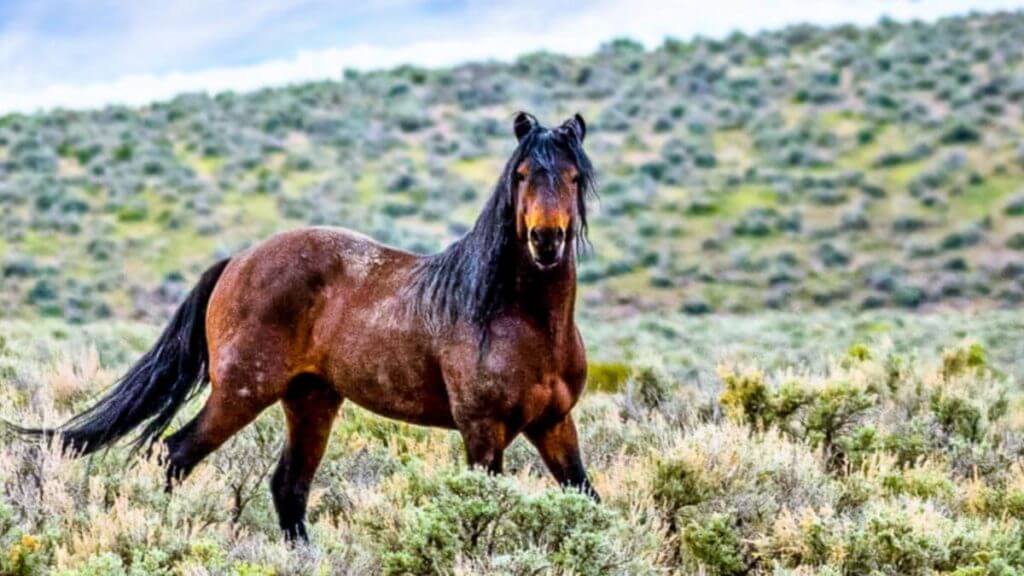
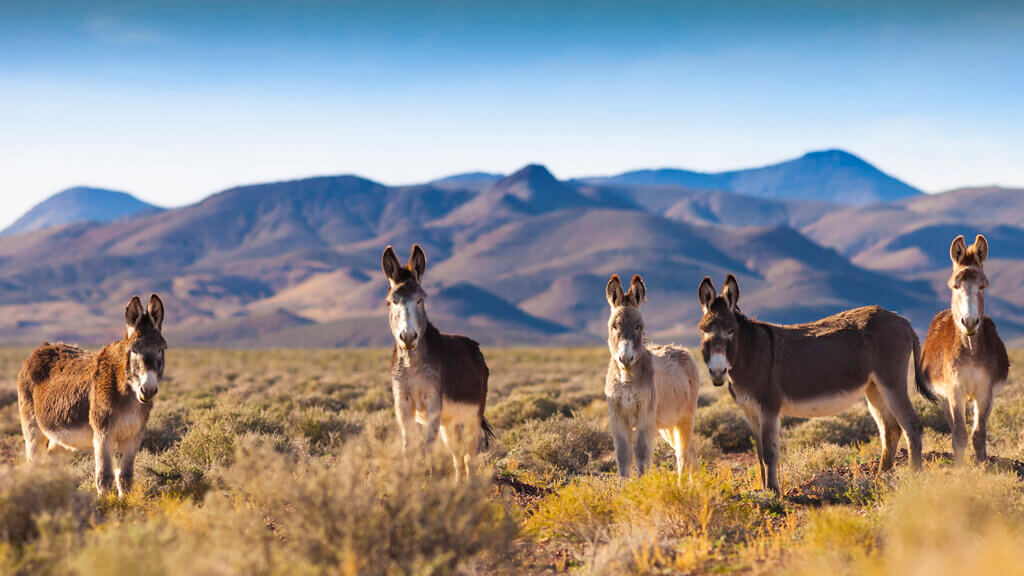
Wild Horses & Wild Burros
Travel Nevada Pro Tip
Nevada also lays claim to the nation’s largest population of wild horses (more than 40,000) and the second-largest population of burros, AKA wild donkeys (more than 3,000)—both of which can be spotted roaming freely in herds throughout the state.
Horse people should definitely hoof it to Washoe Lake State Park, between Reno and Carson City, where a herd is known for rollicking along the shoreline, or even splashing around in the shallow waters, almost any time of year, and can frequently be seen by motorists cruising through Washoe Valley along US-395. Also keep your eyes peeled for them as you begin to ascend Geiger Grade from Reno to Virginia City (outside neighborhoods where they wind up in people’s yards like deer) and along the water in the Truckee River Canyon connecting Sparks and Fernley.
If you’re looking for an all-equine Uncommon Overnighter, Madeleine Pickens’ uber-opulent Mustang Monument Eco-Resort & Preserve welcomes visitors to a forever-home-on-the-range for hundreds of rescued wild horses and their descendents. In addition to watching mustangs do their thing, guests can stay in “safari cottages” and “luxury tipis” in between “in-tipi spa treatments,” guided hikes, dining on over-the-top cuisine, and family activities.
Meanwhile, if you’re looking (or listening) for burros, you can’t miss them in Beatty, where more than 800 of these fuzzy buddies pretty much have their run the entire town—as well as at close-by Rhyolite Ghost Town, where they may just provide a welcomed photobomb in your hard-earned shot of bygone boomtown buildings. If you’re looking to get off the highway, the Marietta Wild Burro Range—the first formally recognized one of its kind—supports a herd of around 100 burros (as well as plenty of wild horses), which wander around a ghost town for which the range was named.
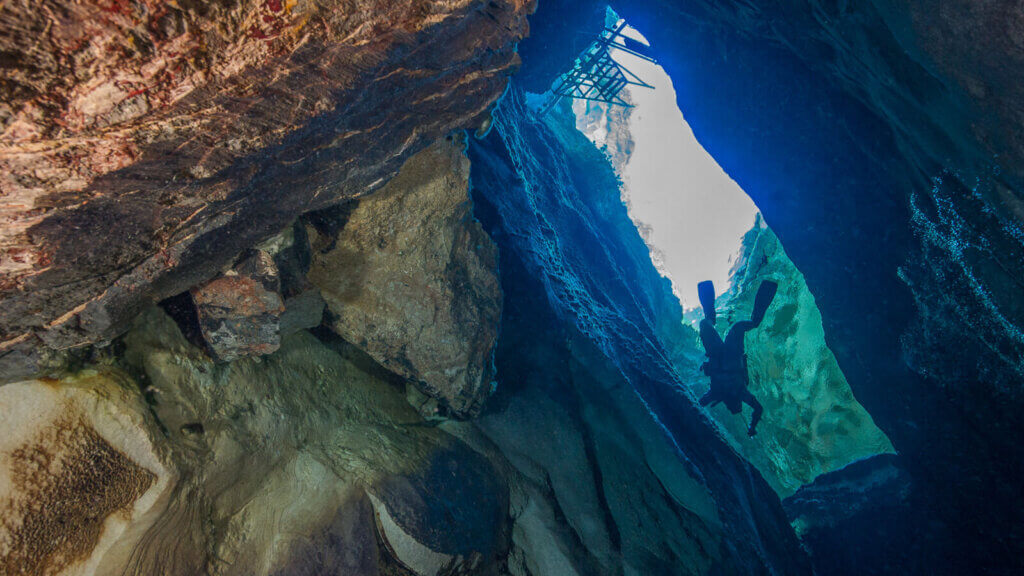
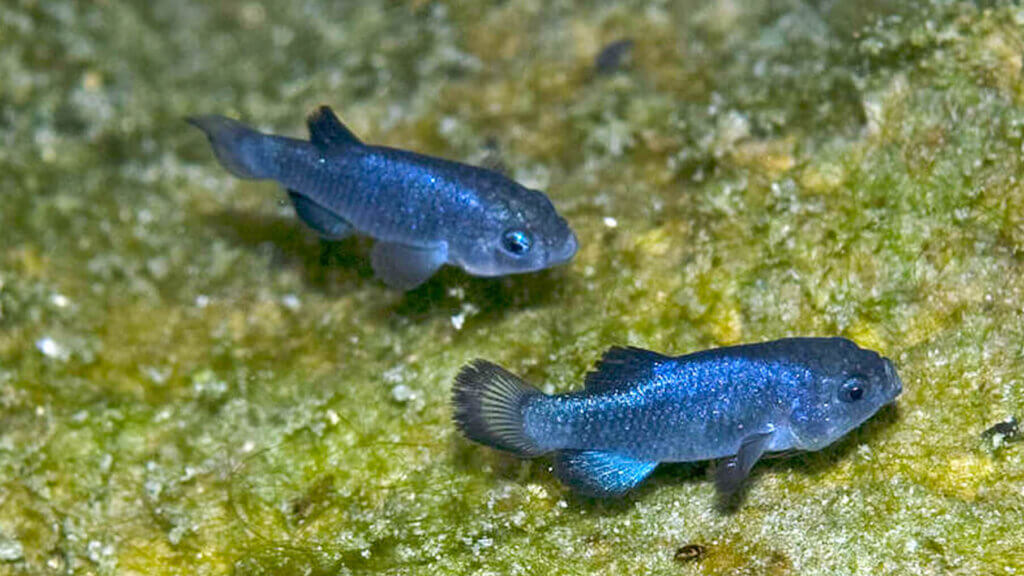
The World’s Rarest Fish
Ash Meadows National Wildlife Refuge is a literal oasis in the Mojave Desert, and the only place you’ll find 27 endemic species of plants and animals—the highest concentration in the United States—across its 23,000 acres of desert uplands, lush wetlands, and sapphire-hued, spring-fed pools.
However, the star of the show is the Devils Hole desert pupfish, which lives in (you guessed it) a spring called Devils Hole—itself a disjunct portion of Death Valley National Park with its own bizarre and mysterious qualities. These little guys number somewhere south of 200, making them the world’s rarest fish. Throughout the refuge, a system of interpretive trails and boardwalks carries you through the stunning landscape—including to a viewing area over Devils Hole—without all the other visitors you’ll encounter at the national park next door.
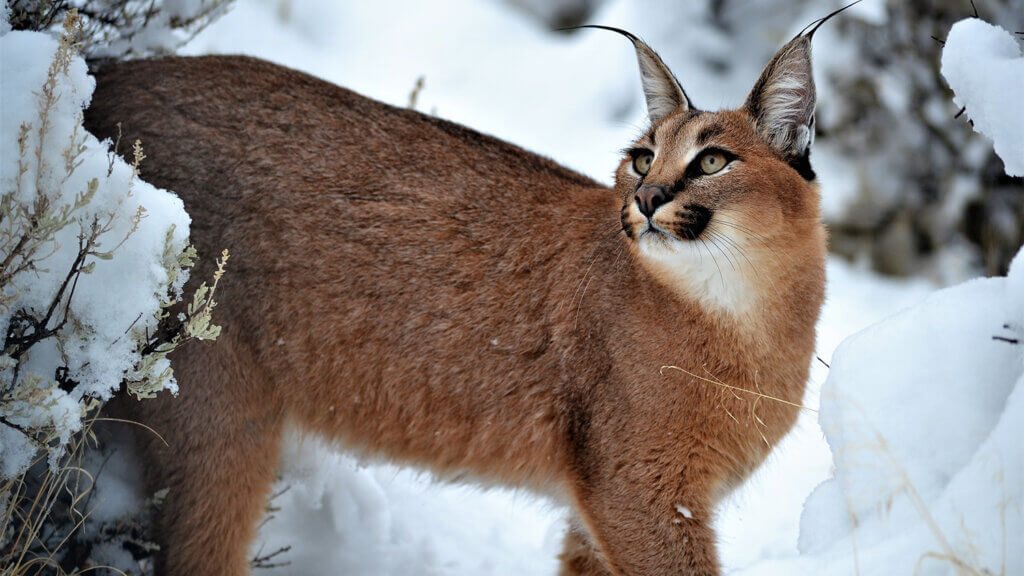
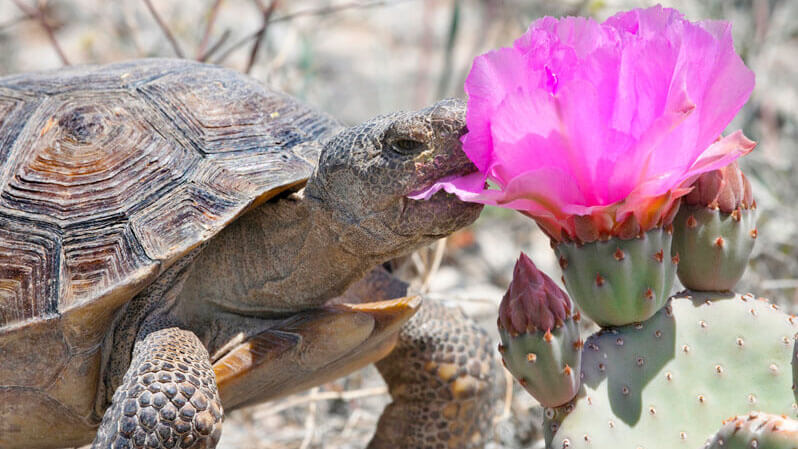
Wildlife Sanctuaries & Animal Parks
If getting out in the field is a little too tall of an order for your visit, there are excellent options in both northern and southern Nevada to get up close and personal with native Nevadan and exotic creatures alike, at nonprofits that legitimately care for their animals and the educational opportunities they offer to visitors of all ages.
Up north you’ll find two of Nevada’s very best wildlife sanctuaries. On the outskirts of Reno, visit Animal Ark to encounter native Nevadan species like the desert tortoise (Nevada’s official state reptile), kit foxes, and raptors, as well as rescued (and non-releasable) critters like cheetah, wolves, Bengal tigers, and more. Be sure to stick around for fun family activities, like the Cheetah Run and the Wolf Howl. Or make the trek east on I-80 to Safe Haven Wildlife Sanctuary, where big cats, bears, and other rescued animals (often illegally owned former “pets”) who can’t return to the wild live out comfortable lives, while injured native fauna rehabilitate before their eventual release back into their original homelands.
Moments from Downtown Las Vegas lies one of the best family destinations in town, the 180-acre Springs Preserve. The Preserve is home to more than 250 species of native Nevada wildlife—from butterflies and birds to gray foxes and a famous desert tortoise named Mojave Max, Nevada’s official “spokes-tortoise.” Trails and pathways through the sprawling grounds wind through wetland habitats, botanical gardens, and immersive exhibits that put adults and kids in touch with Mojave Desert ecology in ways no other place can.
Hit up Lion Habitat Ranch in Henderson to see all kinds of re-homed, expertly cared-for African lions (plus one giraffe) at a facility that advocates for lion conservation all over Africa. Or drive 1.25 hours to Mesquite to meet camels, a sloth, an African crested porcupine, sand cats, and dozens of other critters at Camel Safari – Desert Ranch Experience, an accredited zoo that specializes in caring for and teaching about desert-dwelling animals, and which also offers overnight options and event packages.
Get Inspired
Related Stories
